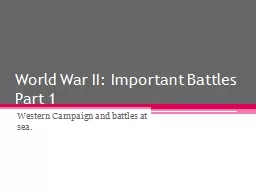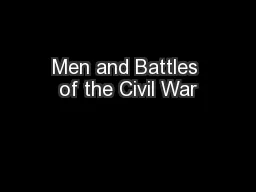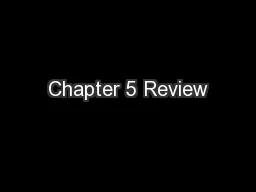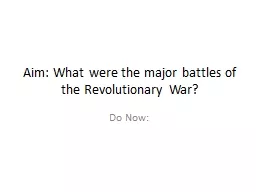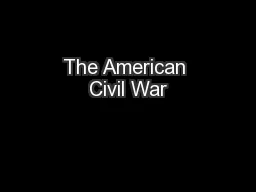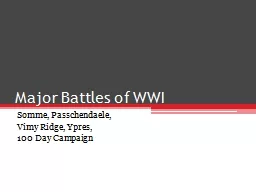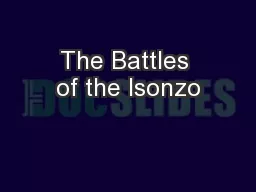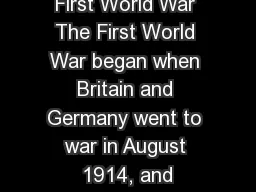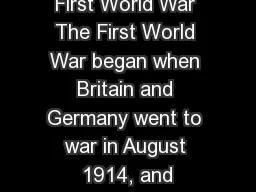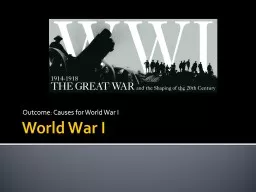PPT-World War II: Important Battles Part 1
Author : pamella-moone | Published Date : 2017-04-15
Western Campaign and battles at sea The Blitzkrieg The success of the Blitzkrieg depended on two things 1 The better use and incorporation of technology then your
Presentation Embed Code
Download Presentation
Download Presentation The PPT/PDF document "World War II: Important Battles Part 1" is the property of its rightful owner. Permission is granted to download and print the materials on this website for personal, non-commercial use only, and to display it on your personal computer provided you do not modify the materials and that you retain all copyright notices contained in the materials. By downloading content from our website, you accept the terms of this agreement.
World War II: Important Battles Part 1: Transcript
Western Campaign and battles at sea The Blitzkrieg The success of the Blitzkrieg depended on two things 1 The better use and incorporation of technology then your enemy 2 Greater and more effective mobility. Healthcare - Associated Infections HIV Motor Vehicle Injuries Nutrition, Physical Activity , Obesity and Food Safety Tobacco Centers for Disease Control and Prevention Office of the Associate Direct By: Jake Ewing. ETE 100 – 02. November 2, 2009. Abraham Lincoln. 16. th. President of the United States.. President during the Civil War.. Freed the slaves.. President from March 1961- April 1865.. Project By: Cailey Vining and Olivia Brewer. People. General who took charge of defending the Georgia and Florida coast. Also, general of the Army of Northern Virginia. . Robert E. Lee. Vocabulary. Union ships line the southern coast and would not allow any Confederate ships in or out.. Do Now:. Early Military Campaigns (1776-1777). After the signing of the Declaration of Independence, the British landed an army of 30,000 troops near New York to reinforce their military in America. General Washington fortified Brooklyn Heights but was outflanked by Sir William Howe in August of 1776 during the . A . Nation Divided . 1861-1865. Monday: November 2, 2015. Bell Work: . Write the following in your notes:. What were the three main causes to the Civil War?. Name 3 . technologies. that changed the way that the Civil War was fought. . Somme, . Passchendaele. , . Vimy. Ridge, Ypres, . 100 Day Campaign. Why do we learn about these battles?. Each one of these battles is unique and significant to Canadians and in history. The battles utilize new weaponry, involve the CEF, helped to determine the outcome of the war, demonstrated the need for new war strategy to avoid high death tolls . Lets keep this final push up!. The Great War:. Stalemate 1914-1917. Outdated battle strategy, especially, by the French made the war very bloody. Believed spirit would win the battle . Germany was on the brink of winning the war at the very start . By: Jack Humble, Golda Ferraz, Emi Nakatsu, and Kai Kang. Thesis:. The twelve battles fought mainly between Italy and Austria-Hungary along the Isonzo river were initially well defended, which proves that direct infantry and artillery attacks would be ineffective in combat with the technology of the early 20th century. . Maisy Webb, Chloe Strandwold, Emily Chen, David Wong. Thesis: . The Battle of Ypres was significant because it was the first time that chlorine gas was used in a war creating a turning point in World War I. After this point, warfare became even more lethal with the rapid and deadly effects of chlorine gas and other chemical weapons. It encouraged the concept of mass slaughtering in war, not just combat. . First . World War 1914–18. Australian troops in the Turkish Lone Pine . trenches.. Australia's . early involvement in the Great War included the Australian Naval and Military Expeditionary Force landing at . Battle of Fort Sumter. April 12, 1861. South Carolina. First Battle of the . Civil War. Lincoln refused to surrender. . the fort; ordered a resupply expedition;. shots were fired.. No casualties of battle. It was a global military conflict that took place mainly in Europe between 1914 & 1918.. It was a . total war. which left great devastation, millions dead and shaped the modern world.. World War I created a decisive break with the old world order that had emerged after the Napoleonic Wars. The results of World War I would be important factors in the development of World War II; 21 years later. First . World War 1914–18. Australian troops in the Turkish Lone Pine . trenches.. Australia's . early involvement in the Great War included the Australian Naval and Military Expeditionary Force landing at . Underlying causes. What causes most wars. Extreme . nationalism. (“Super Patriotism” or love for one’s country). Imperialism: . Spreading the political or economic control of one country over another.
Download Document
Here is the link to download the presentation.
"World War II: Important Battles Part 1"The content belongs to its owner. You may download and print it for personal use, without modification, and keep all copyright notices. By downloading, you agree to these terms.
Related Documents

